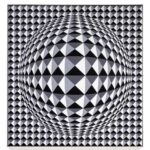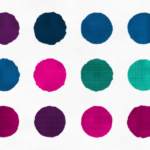Embracing Randomness
In digital art, randomness isn’t accidental—it’s an intentional artistic tool, thoughtfully woven into the art. We see randomness as a dialogue between order and chaos, control and unpredictability, crafting digital artworks that resonate deeply and uniquely with each viewer. By embracing randomness, we explore the subtle interplay between structure and uncertainty, adding depth, complexity, and authenticity to digital art.
Randomness as Creative Intent
Far from arbitrary, our embrace of randomness is precise and deliberate. We consciously integrate uncertainty into our algorithms, sparking imagination and curiosity. Each pattern, texture, and color shift generated through our code is an intentional dance of structured unpredictability, highlighting the delicate balance that defines both art and life.
Mathematical Foundations of Randomness

Mathematical expressions, notably functions like fract(sin(x)*large_number) are foundational in generative art due to their unique ability to produce complexity from simplicity
1. Creating Organic Patterns and Textures
Combining sine waves with fractal functions generates visually organic yet mathematically precise patterns, useful for:
- Terrain and landscapes in procedural environments
- Natural textures such as water ripples, wood grain, and cloud formations
- Organic particle movements in dynamic visualizations
2. Pseudo-Random Number Generation
Artists frequently use deterministic pseudo-random number generators, crucial for creating aesthetically consistent randomness. For instance:
float random(float seed) {
return fract(sin(seed) * 43758.5453123);
}This method ensures repeatable, controllable randomness, essential for noise patterns, element distributions, and visual variations.
3. Periodicity with Variation
Expressions like fract(sin(x)) produce mathematically periodic yet visually complex patterns. This allows the creation of rhythmic visuals that feel organic and spontaneous rather than mechanical.
4. Color and Light Manipulation
Such mathematical functions precisely control:
- Natural and dynamic color transitions
- Realistic lighting and atmospheric effects
- Dynamic color palettes responsive to parameters
Illustrative Examples in Generative Art
1. Color Gradient Patterns
Offsetting the sine input across RGB channels produces smooth, flowing color gradients that appear naturally vibrant yet fully deterministic.

2. Flow Field Visualization
Using fract(sin(x)) to define directional vectors creates visually captivating, organic flow field patterns. This technique is foundational for visualizing complex, dynamic systems.

3. Particle Distribution
Comparing regular sine wave particle patterns with distributions generated through fract(sin(i * large_number)) demonstrates the visual transition from predictable waves to distributions that appear randomized yet remain fully reproducible.

4. Procedural Noise Generation
A step-by-step process clearly illustrates procedural noise creation:
- Starting with input coordinates
- Applying sine functions
- Multiplying by a large number
- Extracting fractional parts
This powerful technique generates textures, terrains, and procedural effects from simple yet sophisticated mathematical functions.

The Art of Controlled Randomness
These functions enable us to consistently produce visually stunning, organic, and complex artworks. We invite you to explore with us the infinite possibilities of art shaped by mathematics, creativity, and the profound allure of intentional randomness.
Modus


